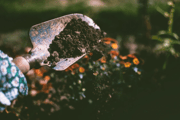Still growing this Bunnings plant? Experts say it’s time to think again
By
Maan
- Replies 0
A lush houseplant adored by home decorators has been unmasked as a silent threat.
What began as a popular Bunnings buy is now raising alarm bells for councils and conservationists alike.
It’s green, it’s pretty…and it could wreak havoc on native bushland.
The Sunshine Coast Council issued an urgent warning after a worker spotted arrowhead vine—also known as Syngonium podophyllum—thriving in a patch of native bushland.
This creeping vine, native to Central America, had taken root in the wild, putting local ecosystems at risk.
A council spokesperson shared: ‘Arrowhead vine is a persistent creeper or climber and once established, it will take root wherever its stem touches the ground.’
‘In natural areas, it can overtake native vegetation and throw our unique ecosystems completely out of whack!’
Despite its popularity at nurseries and major retailers like Bunnings, the plant has earned a nasty reputation across the country.
Brisbane City Council classed it as an environmental weed in Queensland and a ‘sleeper weed’ in other states, due to its ability to quietly spread undetected until it’s too late.
It wasn’t illegal to own or sell arrowhead vine under Queensland’s Biosecurity Act 2014, but both councils and residents were legally bound by a general biosecurity obligation (GBO) to stop its spread.
The Sunshine Coast Council warned that the plant’s biggest weapon was careless disposal.
Garden waste dumping—especially of invasive plants—could result in hefty fines, starting at $333 and climbing to $5,007 if escalated to court.
The Invasive Species Council painted a grim picture, revealing that roughly three-quarters of Australia’s most destructive weeds once began life as innocent garden centre purchases.
‘Over time, they escaped from the confines of gardens and now threaten our natural places, agriculture or, in some cases, human health,’ the Sunshine Coast Council spokesperson said.
Many Australians were shocked to learn their favourite plant might be an environmental villain.
‘Wow, I have this in hanging baskets and several variegated ones. I had no idea it was an invasive weed. Will make sure it stays in pots!’ one resident wrote online.
Another added: ‘Hectic. This is growing at my place. Good to know, thanks for sharing.’
If one innocent-looking houseplant can threaten native bushland, imagine how many other silent invaders could be lurking in backyards and parks across the country.
Biosecurity threats often go unnoticed until it’s too late—and many of them are surprisingly easy to overlook.
For another real-life example that might be hiding in plain sight, here’s what experts are warning about next.
Read more: Are you missing this dangerous biosecurity threat hiding in plain sight?

Could your backyard beauty be secretly threatening Australia’s bushland?
What began as a popular Bunnings buy is now raising alarm bells for councils and conservationists alike.
It’s green, it’s pretty…and it could wreak havoc on native bushland.
The Sunshine Coast Council issued an urgent warning after a worker spotted arrowhead vine—also known as Syngonium podophyllum—thriving in a patch of native bushland.
This creeping vine, native to Central America, had taken root in the wild, putting local ecosystems at risk.
A council spokesperson shared: ‘Arrowhead vine is a persistent creeper or climber and once established, it will take root wherever its stem touches the ground.’
‘In natural areas, it can overtake native vegetation and throw our unique ecosystems completely out of whack!’
Despite its popularity at nurseries and major retailers like Bunnings, the plant has earned a nasty reputation across the country.
Brisbane City Council classed it as an environmental weed in Queensland and a ‘sleeper weed’ in other states, due to its ability to quietly spread undetected until it’s too late.
It wasn’t illegal to own or sell arrowhead vine under Queensland’s Biosecurity Act 2014, but both councils and residents were legally bound by a general biosecurity obligation (GBO) to stop its spread.
The Sunshine Coast Council warned that the plant’s biggest weapon was careless disposal.
Garden waste dumping—especially of invasive plants—could result in hefty fines, starting at $333 and climbing to $5,007 if escalated to court.
The Invasive Species Council painted a grim picture, revealing that roughly three-quarters of Australia’s most destructive weeds once began life as innocent garden centre purchases.
‘Over time, they escaped from the confines of gardens and now threaten our natural places, agriculture or, in some cases, human health,’ the Sunshine Coast Council spokesperson said.
Many Australians were shocked to learn their favourite plant might be an environmental villain.
‘Wow, I have this in hanging baskets and several variegated ones. I had no idea it was an invasive weed. Will make sure it stays in pots!’ one resident wrote online.
Another added: ‘Hectic. This is growing at my place. Good to know, thanks for sharing.’
If one innocent-looking houseplant can threaten native bushland, imagine how many other silent invaders could be lurking in backyards and parks across the country.
Biosecurity threats often go unnoticed until it’s too late—and many of them are surprisingly easy to overlook.
For another real-life example that might be hiding in plain sight, here’s what experts are warning about next.
Read more: Are you missing this dangerous biosecurity threat hiding in plain sight?
Key Takeaways
- Arrowhead vine was found growing in native bushland on the Sunshine Coast.
- The plant is classed as an environmental weed in Queensland and a ‘sleeper weed’ in other states.
- Garden waste dumping is a key contributor to the vine’s spread and can lead to large fines.
- Residents have a legal obligation to prevent the spread of invasive species like this one.
Could your backyard beauty be secretly threatening Australia’s bushland?








